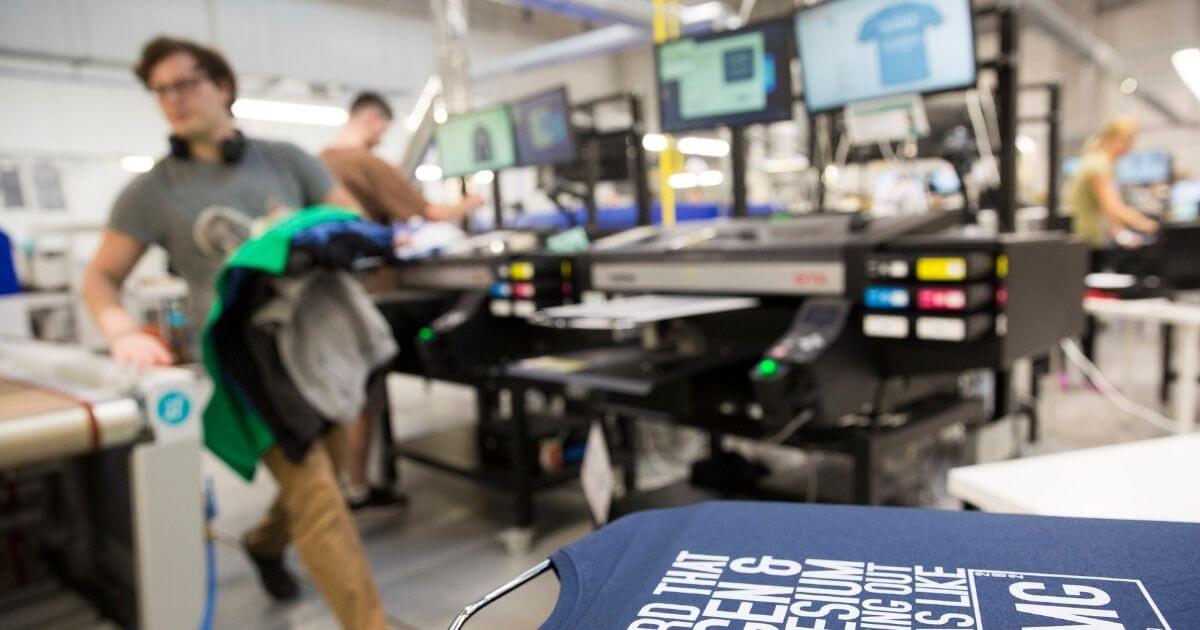More Licensees Turning into POD People

Hybrid Apparel’s acquisition of Air Waves shines a spotlight on the growing print-on-demand (POD) business and licensees acquiring the technology and equipment to power it.
The purchase of the Columbus, O.-based company Air Waves gives Hybrid its first internal POD production capacity. The deal also is the second time in six months that a licensee has acquired a company with POD capabilities. Platinum Equity bought a majority stake earlier this in apparel supplier Mad Engine, which quickly moved to acquire Fifth Sun marking the first time it has owned a POD business.
Significant Investment
For the most part, much of the POD business, even at retailers such as Target, Walmart and Kohl’s, is largely done through third-party manufacturers given the shorter production runs and quick turnaround – days in some cases – required. The investment required for digital POD equipment also is significant. For example, Hybrid had been working with Air Waves on a contract basis since January 2020 before buying the company, Hybrid CEO Bill Hutchison said.
“There will be increased demand for home and lifestyle goods and from soft blankets to comfy lounging clothes and decorating items, people will continue to turn their residences into places of safety, sanctuary and coziness in an uncertain world,” POD supplier Printify Product Manager Gatis Dukurs wrote last fall. “The most effective sellers will think more about their target audience before designing products — because a common POD mistake is to create generic designs and to then think about how they will be sold. Next year’s leaders could be the ones who follow trends; target lucrative, personalized markets; and offer differentiated products that fit that specific niche.”
Agreements
Brands of all sorts and retailers are making POD part of their business plan. Typical 2-3-year licensing agreements, largely for apparel at this point, are increasingly adding POD clauses at standard royalty rates, say industry executives. And lifestyle brands in particular are showing a hunger for POD, says Hutchinson, whose company has worked with the Hurley brand for women’s apparel and counts on lifestyle brands for about a third of its business. Hybrid, which was among the first to sign on with Amazon’s Merch by Amazon POD business to produce apparel using its licenses, will continue to work with the service, but may redirect some production to Air Waves, says Hutchison.
It’s a good bet that that POD option will expand into new categories and the business will continue its rapid expansion amid consumers’ appetite for “in the moment” attire and personalized products – remember last year’s face mask craze? Consumers who shopped from their homes in 2020, “will be no less demanding” going forward, says Dukurs. Personalization will remain in demand and fast shipping will continue to drive it, says Dukurs.
Apparel and accessories currently account for about 80% of the POD business, but there are signs other categories are making inroads, say industry executives. For example, Trevco acquired Graphics & More in 2019 to get its first access to hardgoods and has since expand its POD offering to include drinkware and homegoods. The global printed custom t-shirt market was valued by consultancy Printful at $3.64 billion in 2020 and is projected to increase to $7.57 billion by 2027.
“When you set up a production you have to buy two of everything,” says Trevco’s Trevor George, whose company operates POD plants in Madison Heights, MI and Salt Lake City, UT. “You can’t buy one machine because what it that goes down? And if someone decides to go into a new production line, they’d better be sure that there is enough volume to support a $500,000 to $1 million investment out of the gate. That takes time. So what comes first, the sales that would support that investment or installing that equipment to get those sales?”




